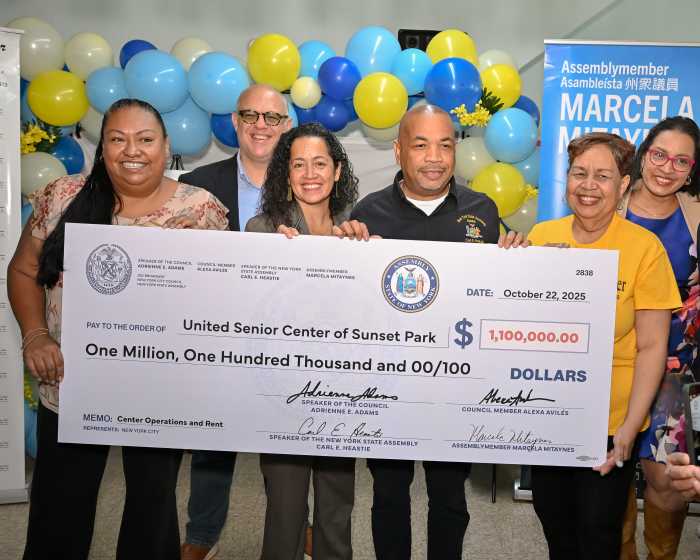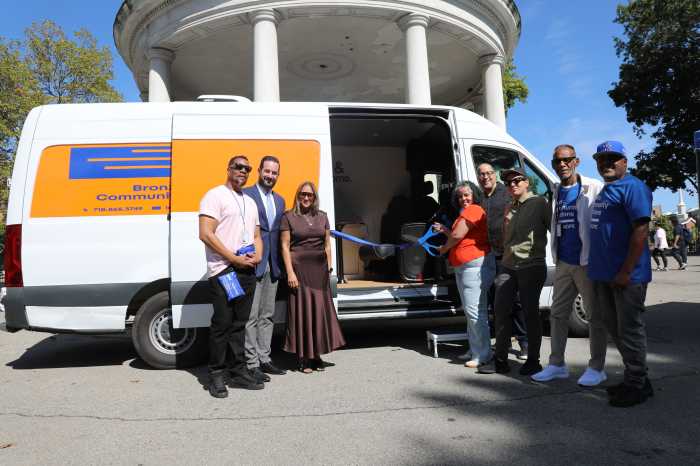Gay Men’s Health Crisis reports train wreck among its poorest clients
AIDS and health groups across the country are reporting that some people with AIDS who are enrolled in the new federal Medicare prescription drug plan are unable to obtain some of their medications or are confronted with increased drug costs.
“Basically it’s the train wreck that we predicted it would be,” said Nancy Ordover, a policy associate at the Gay Men’s Health Crisis (GMHC). “The transition has been, for some people, cataclysmic. We’re hearing stories of people coming out of pharmacies without their drugs because their plan wouldn’t approve them or they couldn’t pay the co-pays.”
The drug plan, also known as Part D, was enacted in 2003. The plan marks the first time that Medicare, the government-run health insurance plan for seniors, is paying for prescription drug coverage. It was championed by President George W. Bush. Hundreds of AIDS and health groups opposed it.
While Part D is voluntary for seniors, one group, the so-called dual eligibles, are required to enroll in the plan. Dual eligibles receive their health coverage through Medicare, but because Medicare did not pay for prescription drugs until January 1 of this year, those costs had been covered by Medicaid, the government-run health insurance plan for the poor and disabled.
There are 6.3 million dual eligibles in the U.S. and an estimated fifty to sixty thousand of them are people with AIDS. Advocates estimate that ten to twenty thousand of the dual eligibles who have AIDS live in New York. Dual eligibles tend to be poorer and sicker than other people covered by either Medicaid or Medicare.
Part D divided the country into 34 regions and invited private insurers to compete for enrollees in each region. Most Medicare beneficiaries can choose from between 27 and 52 insurance providers depending on the region, according to a report from the Henry J. Kaiser Family Foundation.
Medicare partially subsidizes the premiums and co-payments paid by dual eligibles. They were only enrolled in plans that charged a premium equal to or less than the average premium cost in their region. Depending on the region, dual eligibles can choose from among six to 16 plans.
The first problems began in late 2005 when the dual eligibles who had not otherwise made a plan choice were randomly enrolled in Part D plans. The states supplied the federal Center for Medicare and Medicaid Services (CMS) with lists of their dual eligibles. CMS was supposed to give those lists to the insurance providers.
“When they transitioned the 6.3 million people over, they weren’t very successful at it,” said John V. Coburn, senior policy analyst at Health and Disability Advocates, a national policy and advocacy group. “Our experience has been that the states did a pretty good job of identifying their dual eligibles and getting it to CMS. Where it seems to have broken down is from CMS to the providers.”
Peter Ashkenaz, a CMS spokesman, told Gay City News that the agency experienced a “surge” in enrollees among all eligible Americans in late 2005 and early 2006 going from one million on December 13 and adding 2.6 million by January 13. The agency was transitioning the 6.3 million dual eligibles at the same time. The agency’s computer systems and staff were overwhelmed.
“Because of that surge, the information did not get to the providers quickly enough,” Ashkenaz said. The agency has added additional staff to deal with consumer questions and problems.
GMHC’s Ordover said, “Not everybody was enrolled” and that some dual eligibles discovered that their plan’s formulary, or the list of drugs the plan covers, did not include the drugs, other than AIDS-specific medications, that they were taking. Many people living with AIDS take medications that are not HIV-specific, but are necessary because of their AIDS condition. On January 26, the United Press International quoted Vicki Gottlich, senior policy attorney at the Center for Medicare Advocacy, saying that 60 percent of all dual eligibles were enrolled in plans that do not pay for all of their drugs. When they switched plans, those changes were not reported to pharmacists or insurers.
“The dual eligibles are supposed to be able to change their plans without penalty and the system did not update them,” Ordover said. These people were denied drugs when they arrived at their local pharmacy.
In other instances, dual eligibles, many of whom are legally disabled and live on $603 a month from the Social Security Administration, were navigating the complex process of enrolling and inadvertently signed up for a plan that had high co-payments or deductibles.
“When they go to the pharmacy they are getting charged a $250 deductible,” Coburn said. “For someone who is getting $600, that is devastating.”
Ann Hilton Fisher, executive director of the AIDS Legal Council of Chicago, said that her agency had “not by and large gotten the horror stories,” but they were hearing from dual eligibles who had not had to pay co-payments under Medicaid.
“There have certainly been people who have been stunned to find that they are expected to make co-pays for their HIV meds,” she said. “For somebody who is living on $603 a month, they may now be doing monthly co-pays. Even if it is just 15 or 20 dollars that may mean they are not able to pay their phone bill or get the bus card to get to the pharmacy.”
The problems have been serious enough that the Kaiser Foundation reported that “over half of the states” have passed laws that restored the Medicaid coverage of drug costs for dual eligibles and other low-income Medicare beneficiaries. The states are expecting to be reimbursed by the federal government.
In New York, Republican Governor George E. Pataki ordered Medicaid to pay for drugs for dual eligibles. The state Assembly and Senate have passed laws requiring those Medicaid payments to continue.
“What Governor Pataki did was say ‘We’re going to turn Medicaid back on,’” said Michael Kink, legislative counsel at Housing Works, an AIDS service group. “My impression is that the crack-up has been significantly muted by the governor and the Legislature jumping in and ensuring that people will continue to get their drugs.”
One problem that advocates predicted in 2003 has not been realized. They anticipated that some formularies would not cover all AIDS-specific drugs.
“By regulation, all of the plans must cover all of the approved HIV drugs,” Fisher said.
Part D’s future viability is also a question. Seniors are slowly joining the plan. To date, roughly four million have enrolled and CMS hopes that 28 to 30 million will sign up. Seniors have until May 15 to join without incurring a penalty. Without a sufficient market, insurers may pull out of the new federal program.
Part D also heavily subsidizes the insurers in the program’s early years, but that support starts to be reduced in 2008. Whether insurers will stay in the plan without the subsidies remains to be seen. The early experience does not give advocates hope.
“This is the most significant change to public insurance since Medicare and Medicaid were introduced,” Ordover said. “This program was rolled out well in advance of it being able to succeed.”
gaycitynews.com



































